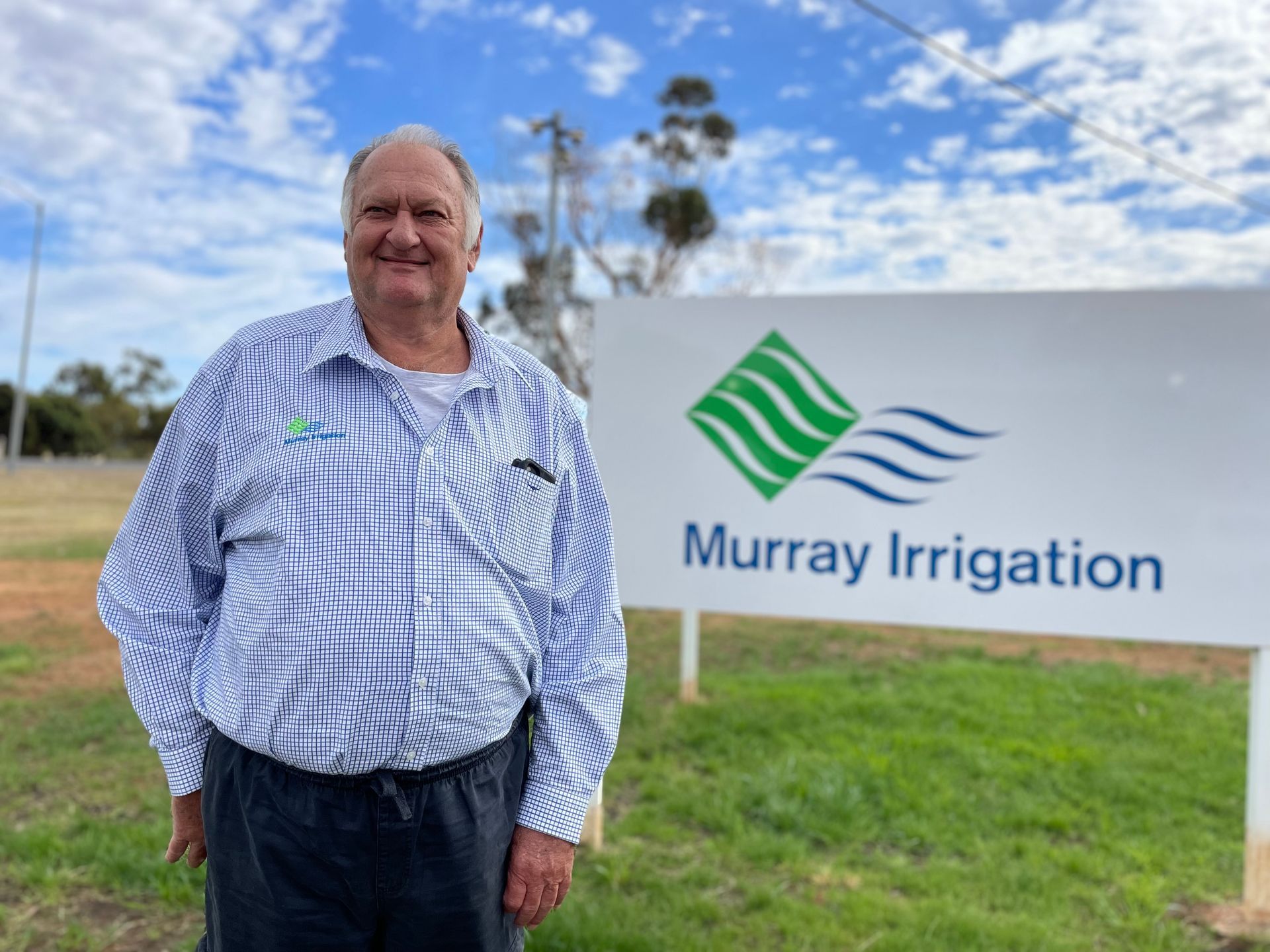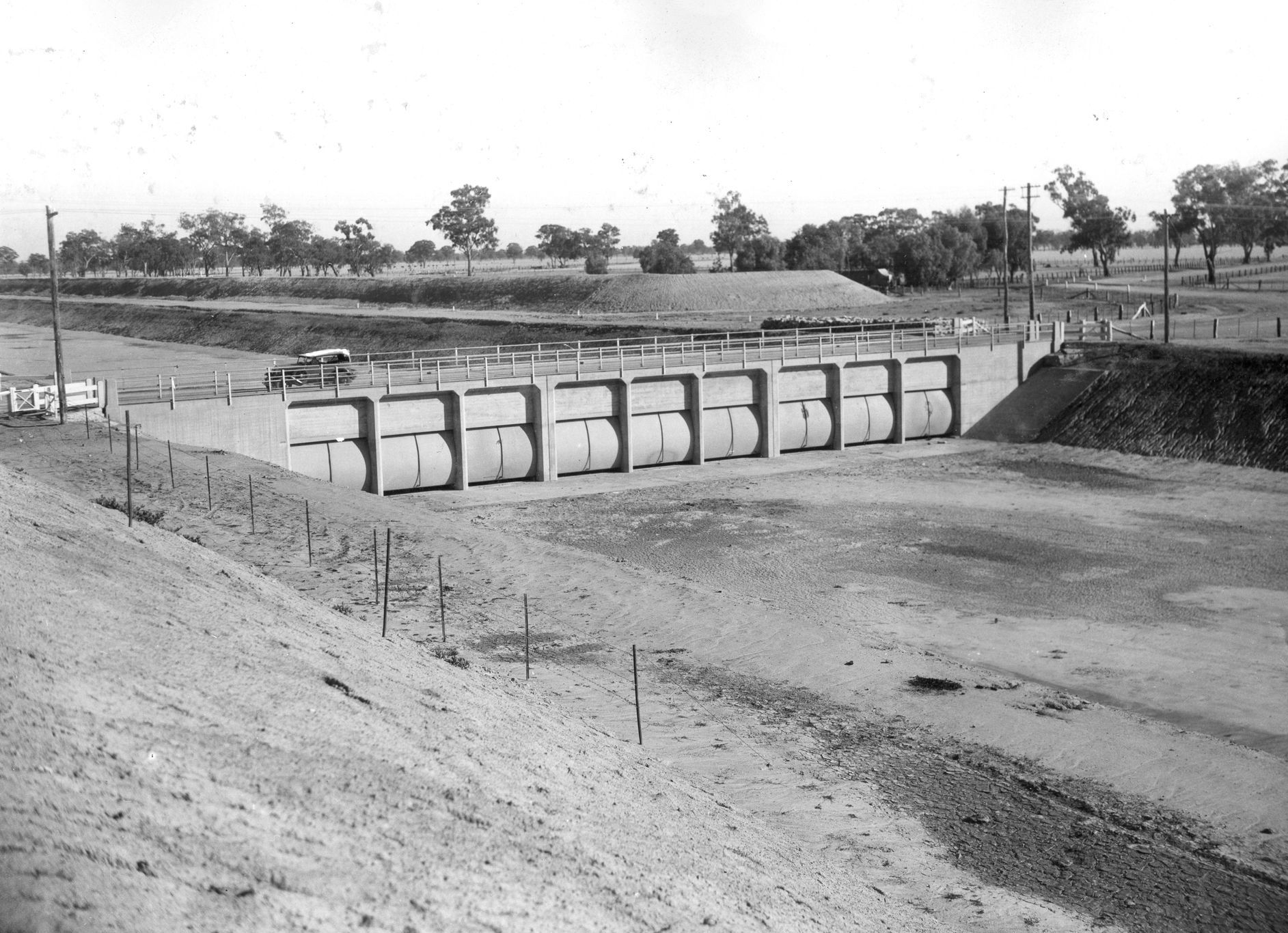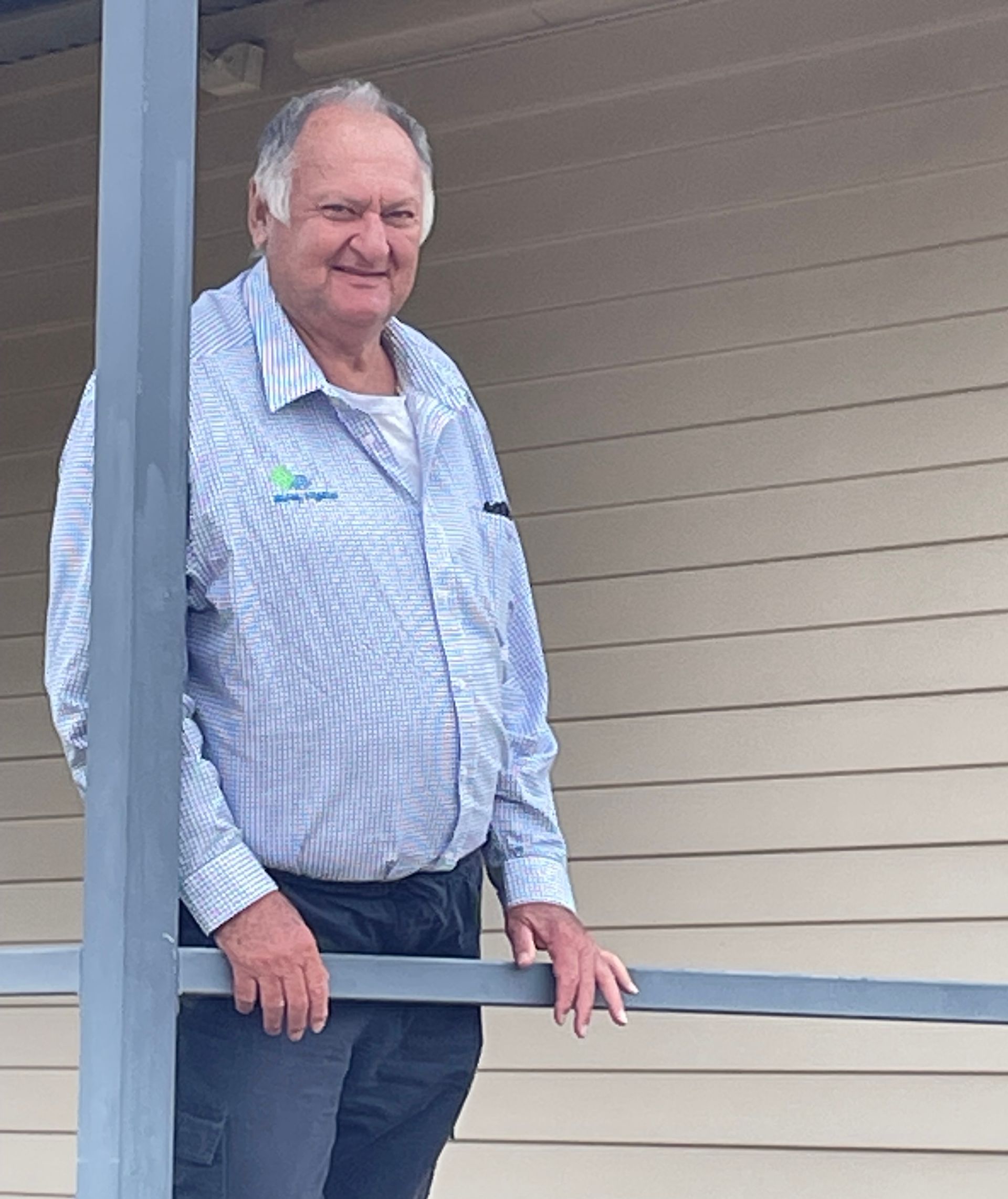Murray Irrigation half centurion has no plans of slowing down

17 April 2023
Phill Thompson works as a Global Information System (GIS) Administrator
at Murray Irrigation.
He uses the GIS technology to map the company’s vast network of infrastructure and assets, and to collect other integral data.
It’s complex, at times all-consuming, work. He’s actually been known to wake up at 4:00am with the solution to a problem that may have been vexing him for days!
The information that Phill spends his days gathering, analysing and
sharing is helping to ensure that Murray Irrigation has a full picture of
what is happening on the ground. This is critical to the ongoing and
efficient running of the company’s water delivery system.
On a side note, Phill used this GIS technology and his expertise to assist Edward River Council identify low spots around Deniliquin during last October’s floods, helping them to determine where the river was running.

“The work can be challenging at times, but when things are going well - and the program is working well - it’s a great job,” Phill said.
“It’s probably the best job I’ve had since I started working in this business.”
These words from a man who has just notched up 50 years’ service at Murray Irrigation!
In the past five decades, Phill’s work responsibilities have ranged from nine to five hours in the office, to long days in the great outdoors. And he has embraced every opportunity to learn, build new skills and grow professionally along the way.
“I’ve always had a hunger for learning,” he said “I think I’ve had the best opportunities of anyone I know.”
Phill’s current role is a far cry from the work he was tasked with when he first arrived at the company’s Finley yard in February 1973, just “a skinny young kid”.
Fifty years on, he only has to look out the window from his desk to see the exact spot where it all started.
“I can’t remember much about my first day – but I know it was hectic, because I started in the store,” Phill said.
“You could say I’ve come full circle, because that store is only 150 metres from where I’m sitting now.”
In 1973, Murray Irrigation was still a government-owned entity, being run by the Water Conservation and Irrigation Commission (WCIC). Over the next 22 years, this body
would undergo a further two identity changes (becoming NSW Water Resources Commission in 1976 and NSW Department of Water Resources in 1986) before control and operation of the system was handed over to the irrigators in 1995, marking the
birth of Murray Irrigation as we know it today.
As a young stores officer, Phill spent busy days delivering a constant supply of stock
and equipment to the bustling Finley workforce, which was responsible for operating
the channel system between Mulwala to the old Deni CSIRO station south of Conargo. Orders were sent to Sydney and transported by rail. With not even a hint of computers on the horizon, each piece of inventory had to be painstakingly documented into a giant ledger book.

At that time, the Finley site employed around 140 people. According to Phill, at knock-off time pedestrians would have to wait half an hour before they could cross the main street, waiting for the procession of vehicles streaming from the yard to pass by. There were welders, mechanics, carpenters, trye fitters and apprentices. Not to mention the “outdoor guys”, such as the dragline excavator operators who would clear debris and other build up away from the channels, and the teams of channel maintenance workers, who could often end up soaking wet over the course of their day.
“The maintenance guys’ jobs would range from digging out leaks in the channels and out of wheels – and they’d do it by shovel – no mini excavators back then,” Phill said.
“They’d pull dead stock out of the channel system, and then be up to their necks in water pulling Cumbungi out of the channel.
“In the Summer time, the blow grass up towards Jerilderie was always a big event. The guys would have to get in the water and, by hand, try to get every single shoot out of the channel to stop it from getting blocked.
“As you can see, it was pretty full-on back in those days.”
Phill spent more than 10 years of his career at Murray Irrigation right at the coalface, delivering water to farmers as a channel attendant.
This was at a time when water orders were still largely being taken via a water card system. Farmers would write down their orders on small white cards and leave them
in an order box for the water channel attendants to collect. After the orders had been called through to the office, the water delivery could begin. Gates had to be opened
and heavy redgum drop bars had to be lifted to complete the order. It was physically demanding stuff - and not for the faint hearted.
“Now they push a button for the gates, they push a button for the outlets, and away
they go,” Phill said.
He is, of course, referring to the evolution Murray Irrigation’s water delivery network
has undergone in the past 20 years or so. The once manually operated system that required boots on the ground has been automated and is now controlled remotely.
No more order cards; no more gates; no more drop bars!
Despite the physical demands, Phill enjoyed his time running the channels.
“They were good days,” he said.
“Even working Christmas Day wasn’t so bad. You probably finished up with a couple dozen of bottles of beers by the end of the shift.
“The farmers would leave something at the wheel for you because they appreciated
the work you did. No bribes! Just a thank you for what you’d done for them during the year.”
With 50 years’ service under his belt, it would be safe to say that Phill’s fingerprints are everywhere across the business.


By way of example, he was actively involved in the establishment of the first touch-button water ordering system that was a precursor to the sophisticated system Murry Irrigation has today. He also participated in the mammoth task of mapping the company’s entire assets following privatisation in 1995.
"There were three of us - Barry Basham, Michael Telford and myself - we went out there with GPS units and we GPS’d every structure that we had in the system,” Phill said.
“And that’s how our current GIS system started.
“We’d be out there with backpacks, trudging around the farms, collecting all the data - where all the wheels were, where all the stock points were, where all the bridges were - taking a point.
“We’d collect the data and go back into Deni every Friday because we had a real time GPS unit at the office. We’d post-process the data back into the system, and that would then bring it all into alignment with surface.
“We did that for about 12 months. We had everything we needed in the system GPS’d, and then we went through and developed what we’ve basically got today.”
Phill admits there’s probably not a channel across the Murray Irrigation system that
he hasn’t traversed at some point during his career. And with his travels have come
an array of colourful tales; especially of the old days.
His experiences working as a relief payroll officer back in the 70s are the perfect case
in point.
As Phill explains, pay days back then would begin with a morning run out to the gangs working around Berrigan, Jerilderie and Mulwala. It was all cash, and the payroll staff made sure they were suitably prepared for any situation.
“We carried a little revolver with us on those runs (I think it was a Colt 45) just in case
of armed robbery,” Phill said.
“There would be four of us in the vehicle - two in the front and two riding shotgun in
the back, just like the Wild West set up on a stagecoach.
“We’d always plan these trips to finish near Cobram, because one of the guys could
then drop off his Tatts Lotto tickets. NSW didn’t have Tatts Lotto at the time!”
Pay day at the Finley yard was also an occasion that he enjoyed immensely - a real
sight to behold.

“There’d be a hundred or so staff lined up at the foreman’s office ready to get their cash,” Phill said.
“You’d watch them as they’d have a look at their time sheets, have a look at their pay - and then you could see them working out: ‘this bit’s for me, this bit’s for the publican, and this bit’s for mum’.
“The wife would get what she got.
“When everything went digital and the pays started going into the bank, the wives wondered why there was so much money. The guys would have to explain that they’d done some over time and earned extra pay. They got out of it that way!”
But the past 50 years of Phill’s life haven’t all been about work.
In 1973 he met “a lovely girl”, Jennifer, at a 21st birthday party. They married in 1975, raised two daughters, and today have four grandchildren.
Amidst work and raising a family, Phill has also made time for community. He has served as an on-call firefighter with the local Fire and Rescue NSW outfit for 49 years (he is currently second in charge). He has also been an avid sports participant and has contributed to the local golf club as a President and Captain.
Despite having 50 years behind him, Phill has no plans of slowing down any time soon.
“I’ve had a good journey, and it hasn’t stopped yet,” he said.
“I just want to keep the brain going for as long as I can. It’s got to help you in the long run.”
All this from a man who, as a kid, wanted to be a policeman.
“It’s all worked out for the best,” he reflects.
“I think I’d probably be the worst copper in Australia!”

